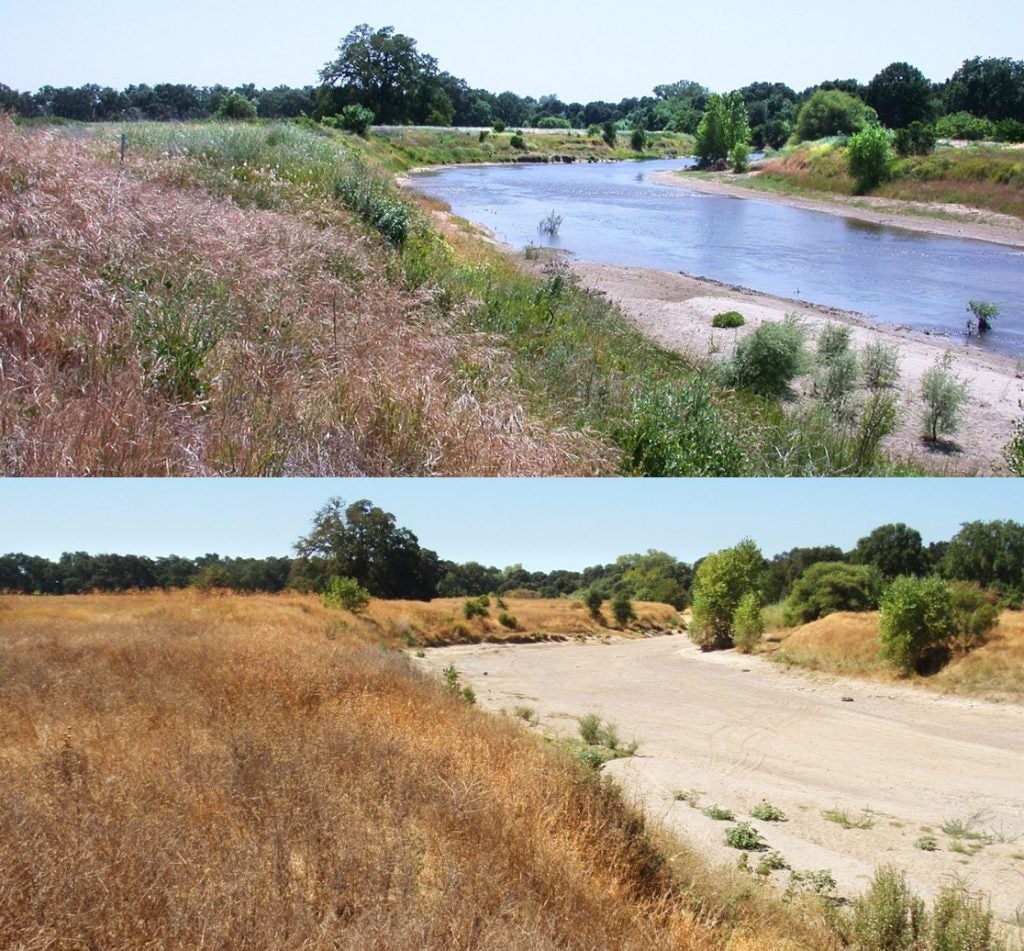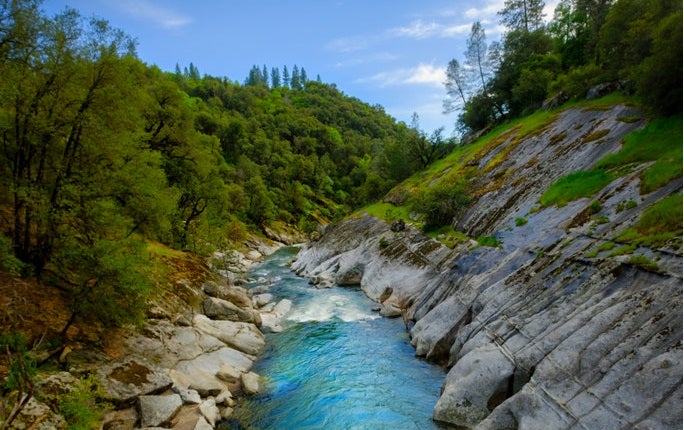The Cosumnes River is one of the last undammed rivers west of the Sierra Nevada. While not a large river, it flows year-round out of the Sierras, east of Elk Grove, south of Sacramento, and across the floor of the Central Valley before adding its modest flow to the Mokelumne River.
Every year, however, around the Fourth of July, the lower part of the Cosumnes River goes dry, even while the flow from the Sierras continues. The lower river stays dry until the first big rains come, sometimes as late as December or January, and resumes its high flow throughout the winter months.

When the Cosumnes River flows onto the valley floor, it leaks surface water into groundwater because the groundwater levels are low. In the summer, the river goes completely dry because the flows are especially low compared to the high leakage rates.
How can a river be flowing and then disappear downstream? The explanation lies in the inevitable interaction between groundwater and surface water, which have been managed separately – until now.
New policy presents new challenge and opportunity
Passed in 2014 in response to the growing pressures of climate change and population growth on California water, the Sustainable Groundwater Management Act (SGMA) requires 127 priority groundwater subbasins to avoid six “undesirable results,” or “six deadly sins,” as some water officials have called them.
The six deadly sins are: significant groundwater level declines, groundwater storage reductions, seawater intrusion, water quality degradation, land subsidence and surface water depletions.
To address the sixth sin – surface water depletions – SGMA will require groundwater managers around the state to more actively manage groundwater and surface water together. This new requirement, though critically important for avoiding depletion of rivers like the Cosumnes, presents groundwater managers with the new challenge of managing surface water.

The North Fork of the Cosumnes River. The challenge of managing surface water is most relevant to water managers in the Sacramento Valley and coastal ranges north of the San Francisco Bay Area, where groundwater levels are still comparatively high and therefore connected to streams and rivers. Further south, in the Central Valley, groundwater levels have fallen so low that many streams are no longer connected to surface water. (Photo Credit: Joel Olives)
Given a dearth of established practices to manage surface water depletions, my Environmental Defense Fund colleagues and I worked with other California water experts to develop an approach for addressing this sixth sin of SGMA. Our recommended approach is outlined in a new white paper, “Addressing Regional Surface Water Depletions in California: A proposed approach for compliance with the Sustainable Groundwater Management Act.”
Here are the three key principles in our approach:
1. Use groundwater levels as an indicator of depletion.
“Our hope is that these recommendations can help water managers overcome some of the uncertainty and provide consistency for compliance with the new law.”
If groundwater managers select threshold groundwater levels in the vicinity of a stream and then manage the groundwater to keep levels above those thresholds, it’s as good as – and much more practical than – trying to measure and maintain the actual amount of stream depletion.
2. Use the best available information.
To comply with SGMA, groundwater managers will need to maintain water levels along the stream at or above the levels that existed prior to January 1, 2015. Where we have good groundwater level monitoring data, this is straightforward. But in many, if not most cases, we don’t really know what groundwater levels were in the years before the law’s passage. In these cases, computer modeling of groundwater conditions should be used to make the best possible approximations of the levels in the years leading up to 2015.
3. Address seasonal and annual variability.
Establishing threshold levels for compliance should account for wet and dry years and seasonal variations. Beyond normal variability, we recommend water managers view the years immediately before 2015 as the bottom of the allowable range for water levels given the historic drought during that time.
California’s new groundwater law will require water managers to more actively manage streams and rivers for the first time. Here are three ways to address this new challenge: Share on XThis is just the start of improving water resilience
Our general approach is just a start, as there are still many details to work out. We hope to work with local groundwater managers over the coming months and years to further detail how they can successfully avoid the sixth deadly sin of SGMA and protect our streams and rivers from further depletion. We don’t want other rivers running dry like the Cosumnes.
Our hope is that these recommendations can help water managers overcome some of the uncertainty and provide consistency for compliance with the new law.
Ultimately, if California succeeds at more wisely managing groundwater and surface water as an interconnected system, we will be taking a huge step toward ensuring a resilient future for California’s environment, communities and economy. With care, we could even make California a model for other arid regions around the world.
Download our white paper to learn more.









